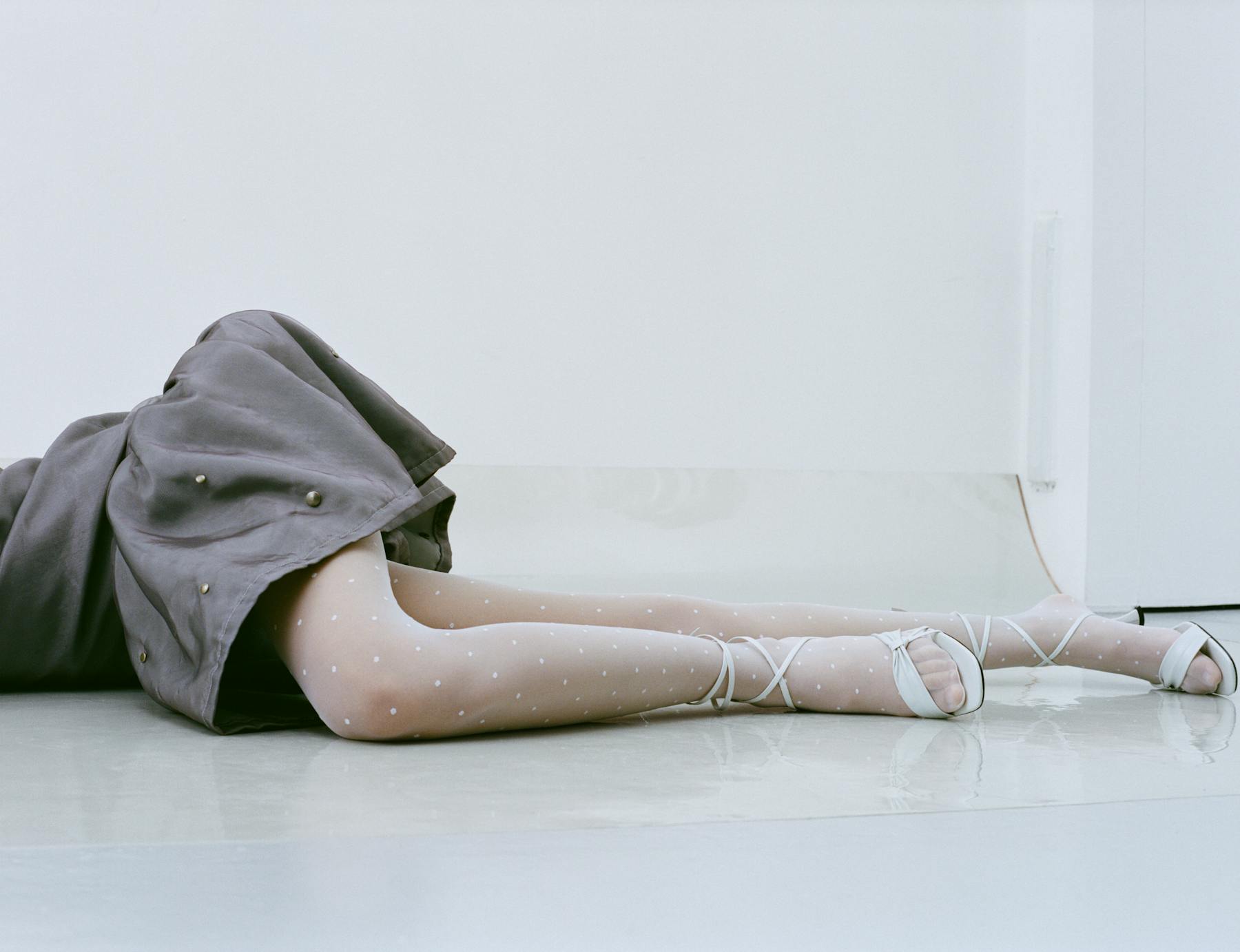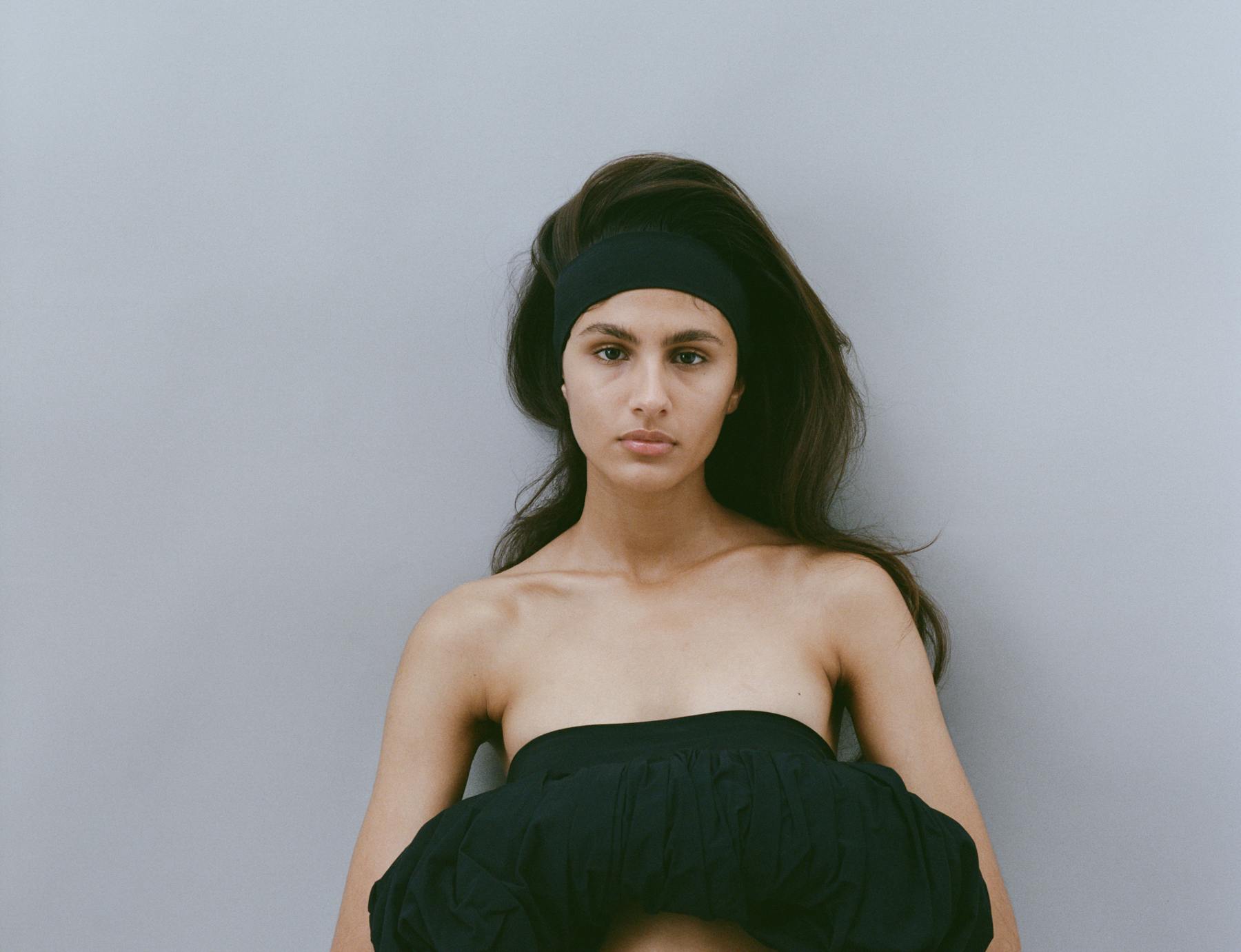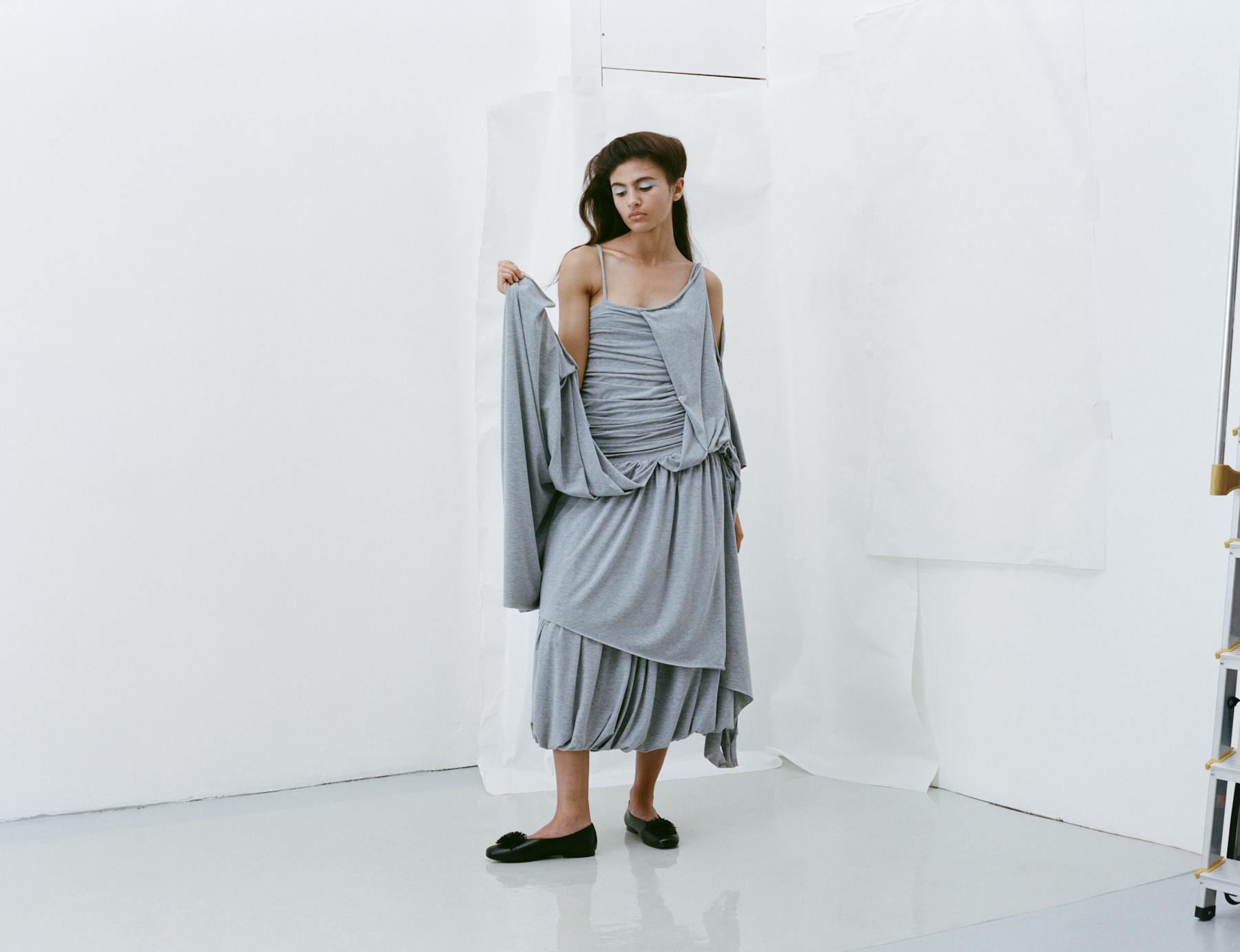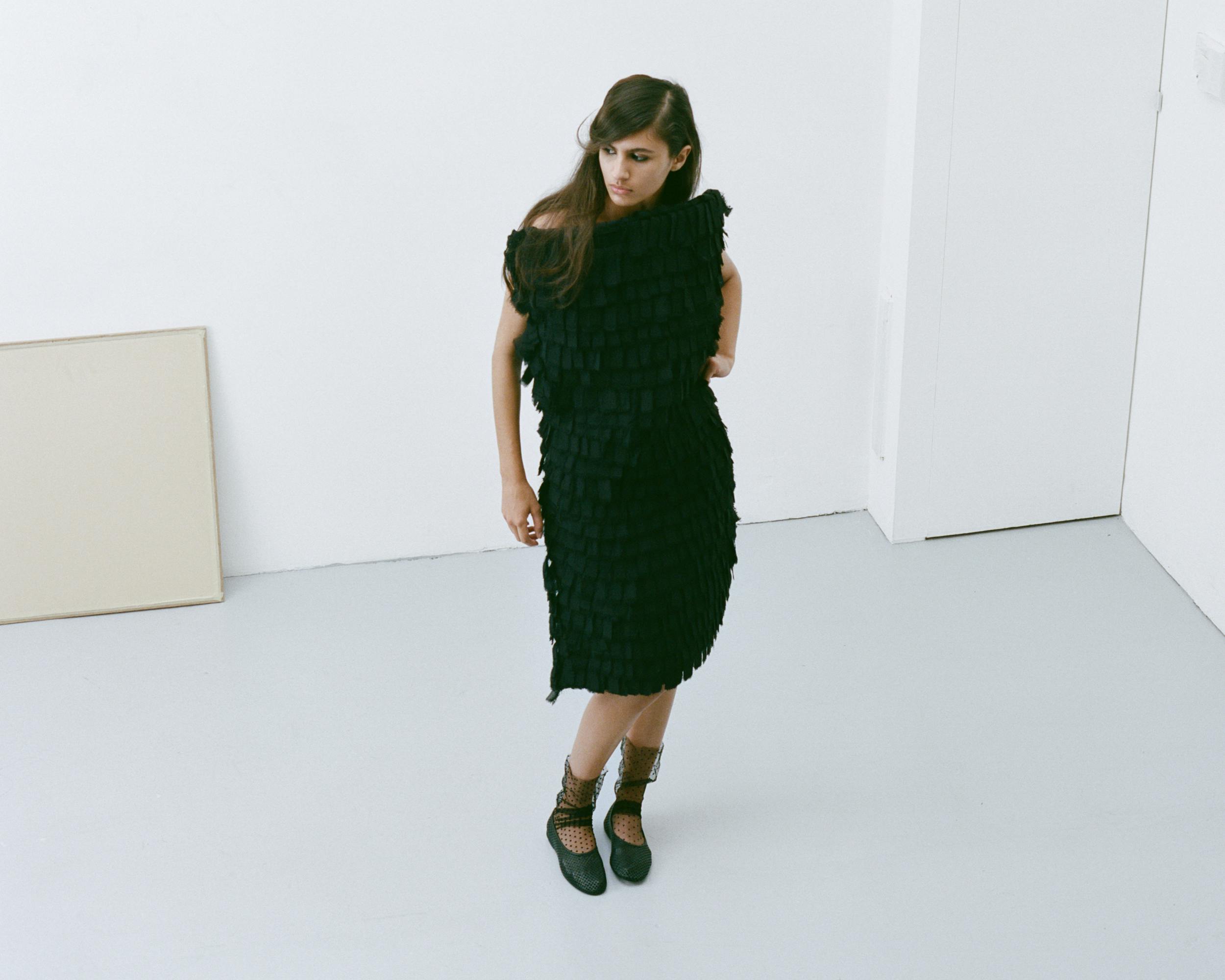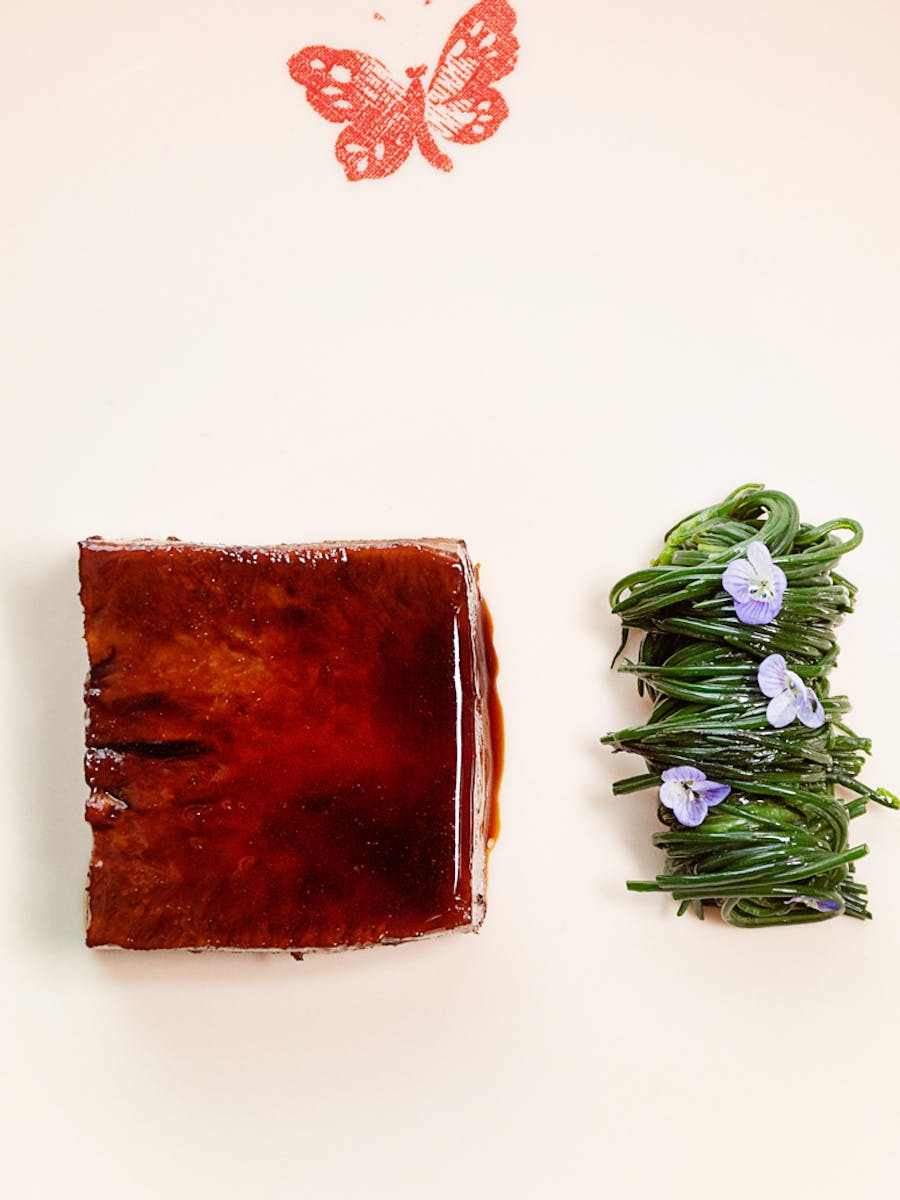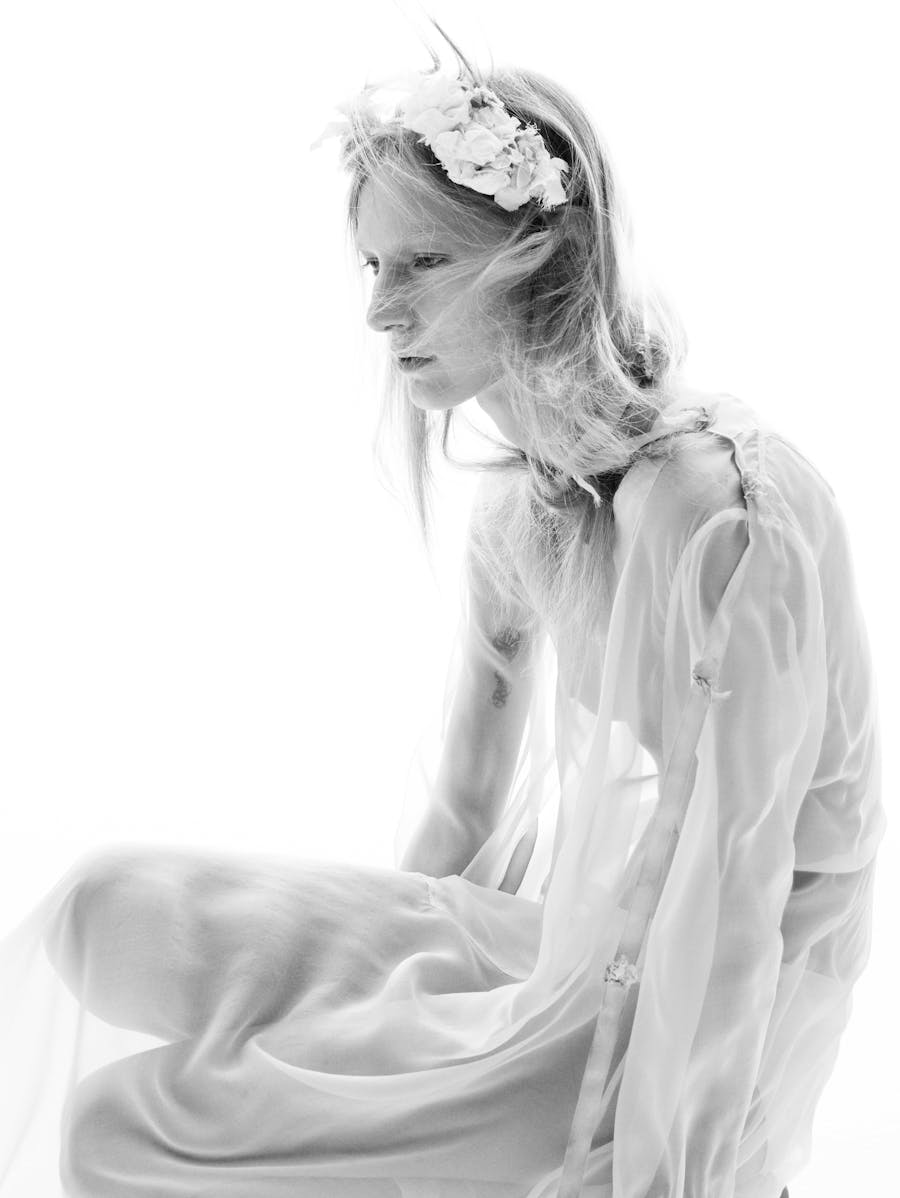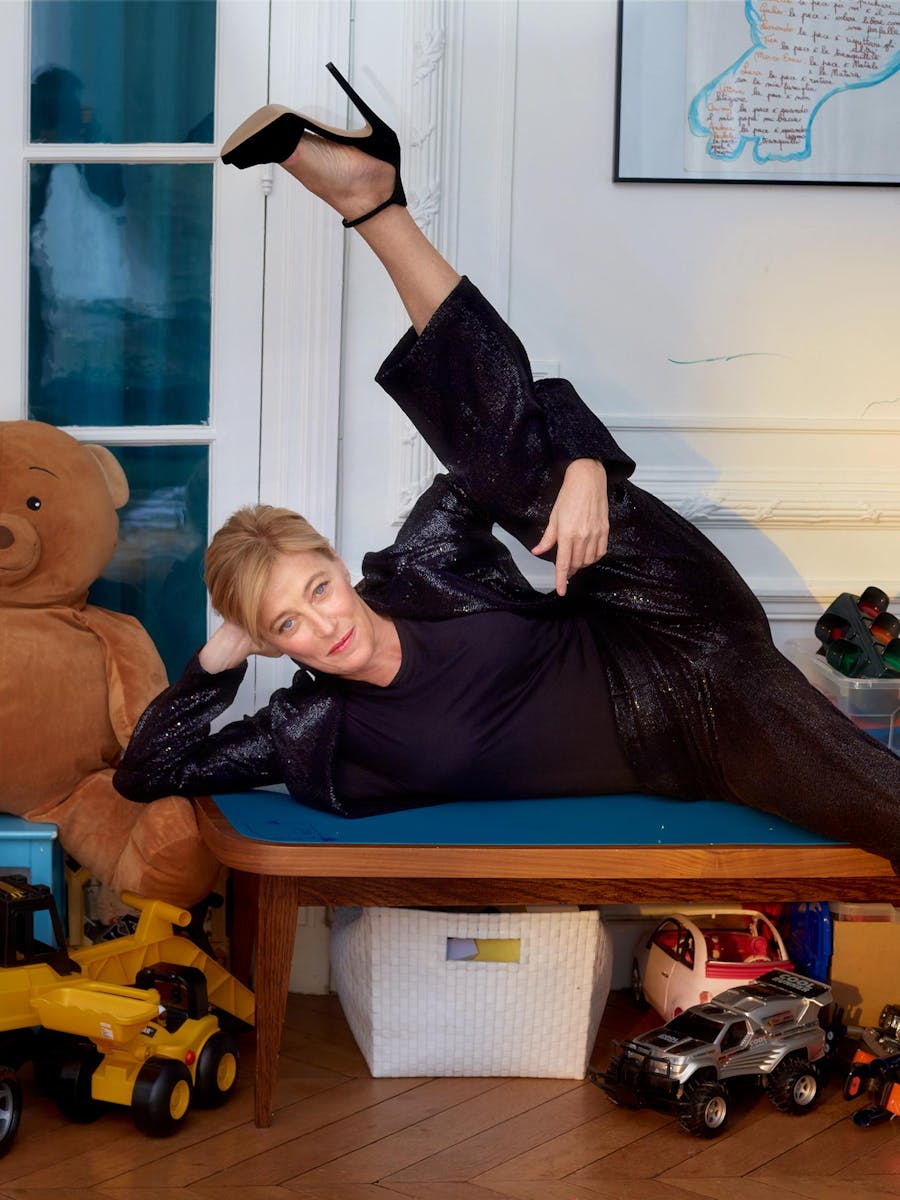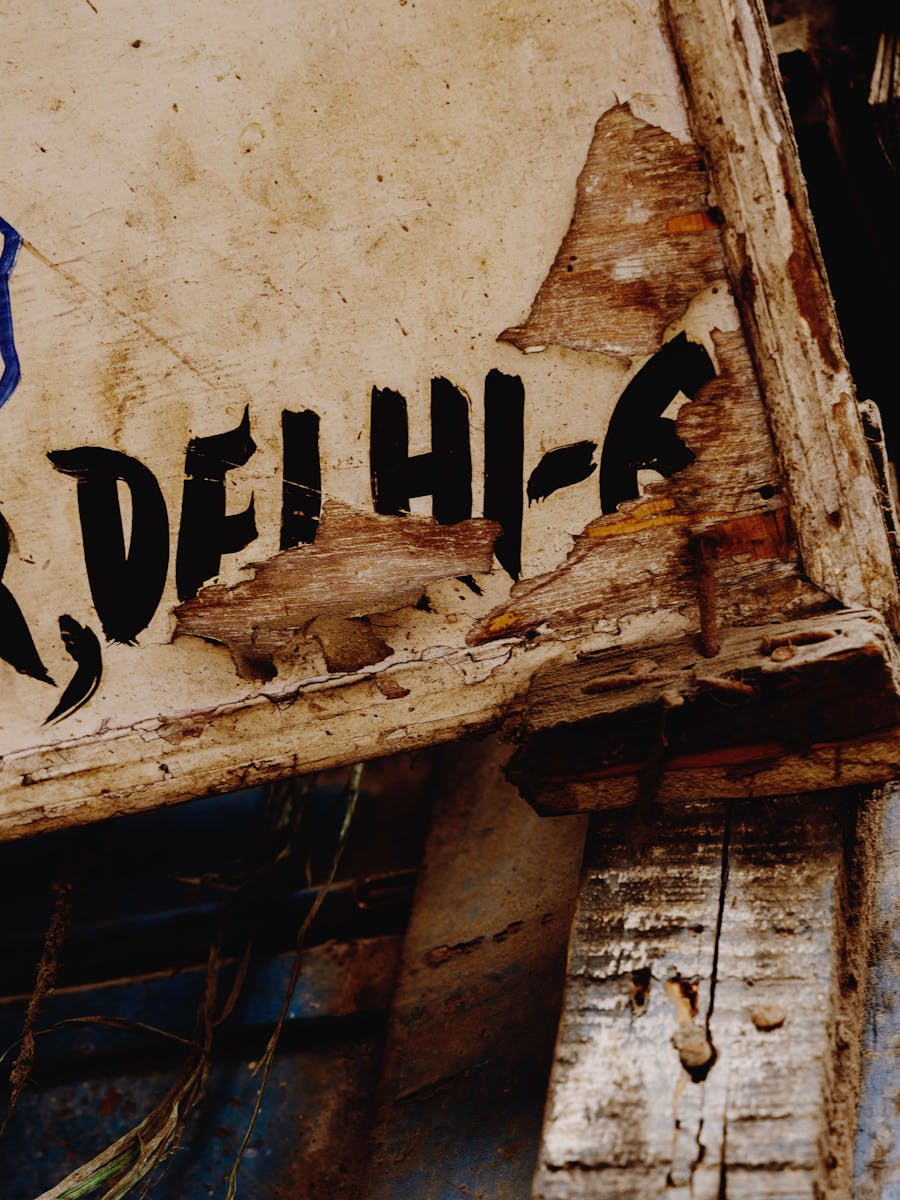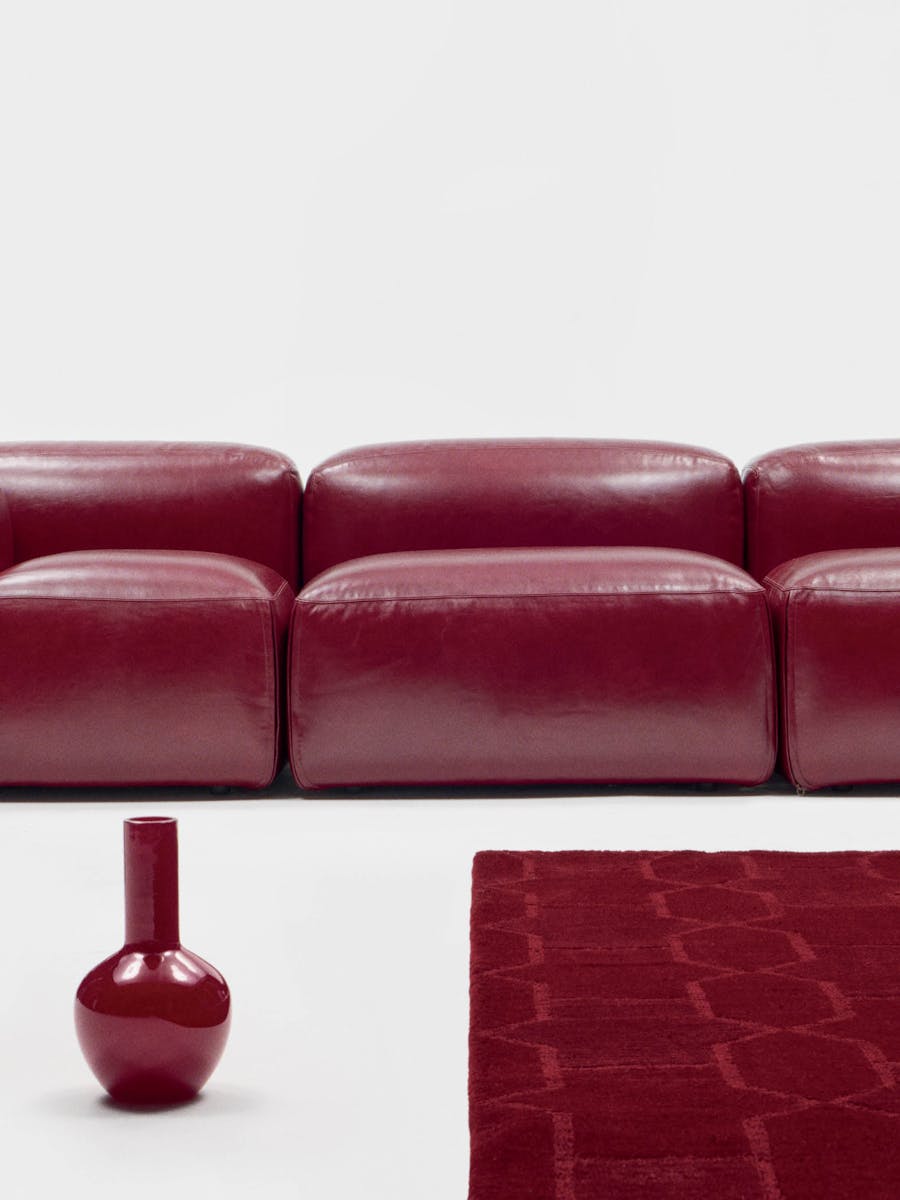Blending Danish roots, a digital spirit, and fearless creativity, we caught up with the effortlessly cool Nicklas Skovgaard.
Growing up on Thurø, a small Danish island, Nicklas Skovgaard discovered fashion through the pages of magazines and fashion campaigns. Five years after launching his eponymous label, the young designer reflects on his journey — and on his vision of a joyful, personal, and daring fashion deeply influenced by internet culture. A conversation with a rising voice in Danish design, one you’ll be hearing much more about.
Hi Nicklas, how are you feeling today?
Hi Exhibition Magazine! I’m feeling very good today. I woke up at 7 a.m., the sun was shining, and I had two cups of coffee!
You grew up on the small island of Thurø. What is your very first fashion memory?
My first real fashion memory is realizing how clothing could transform your character. I remember watching my mother get dressed — whether for everyday life or a night out — and noticing how she changed depending on what she wore. It was like magic. That moment sparked my love for fashion. It felt like discovering a language that didn’t need words.
Did you always want to become a fashion designer?
I think I was around eight when I first thought, “I want to be a fashion designer.” It was a very innocent, childlike dream back then. I used to dress up dolls and drape little pieces of fabric on them, not knowing that one day it would turn into an actual career.
Can you introduce your eponymous brand?
I started the brand in 2020, not with a master plan, but quite intuitively. I began sharing handmade, one-of-a-kind pieces on Instagram, and people started responding, reaching out. It grew organically from there. I’d say the brand lives somewhere between romanticism and realism. There’s always a softness, but also structure, something grounded in the everyday, and in memory.
Where do you usually find inspiration?
A lot of my inspiration comes from collecting all sorts of things: garments, books, shoes, random objects. I’m drawn to pieces that carry a story. Each item I find often sparks an idea, and I love seeing those ideas evolve into new garments. I think it’s beautiful to weave a little bit of that history or memory into every piece I design. In a way, that’s how I nourish my creativity — by taking time to visit thrift stores or flea markets, and allowing myself to get lost in the hunt for something unknown.
What about your latest “pajama party” collection unveiled this summer in Copenhagen? What was the starting point of this cool, sexy and funny collection?
It all started during Easter this year. I was redoing my apartment and buying new bedding, and I began thinking about how much time we actually spend in bed — and how personal that space really is. The way you approach your bedroom, or don’t, says a lot about who you are. It’s kind of like getting dressed: it reflects your character. That connection between private rituals and personal expression became the starting point for the collection.
You seem to have fun creating garments. Would you say that you’re an optimist? Is joy an important part of your ethos?
Yes, absolutely. I think that to thrive in this sometimes chaotic industry, I have to genuinely enjoy what I’m doing. Joy keeps me going. I try not to set boundaries when it comes to what kinds of garments I create, I stay open. Even if I’m working on something I’m not immediately drawn to, I like to keep pushing it to see how it evolves. For me, fashion is about creativity without limitations, and having fun in the process. That sense of freedom is essential to my work.
How important is Danish culture in your work?
It’s a very important part. For my first show, two years ago, I collaborated with Dutch performance artist Britt Liberg, who was the only model in the entire show. I was deeply inspired by the Danish painter Gerda Wegener, who in the 1920s often portrayed her husband — later wife — Lili Elbe as the ultimate muse in her paintings. I saw Britt in a similar way for that collection, as the central figure, the muse who embodied everything I wanted to express through the clothes and the show. That connection between art, identity, and storytelling really resonates with me.
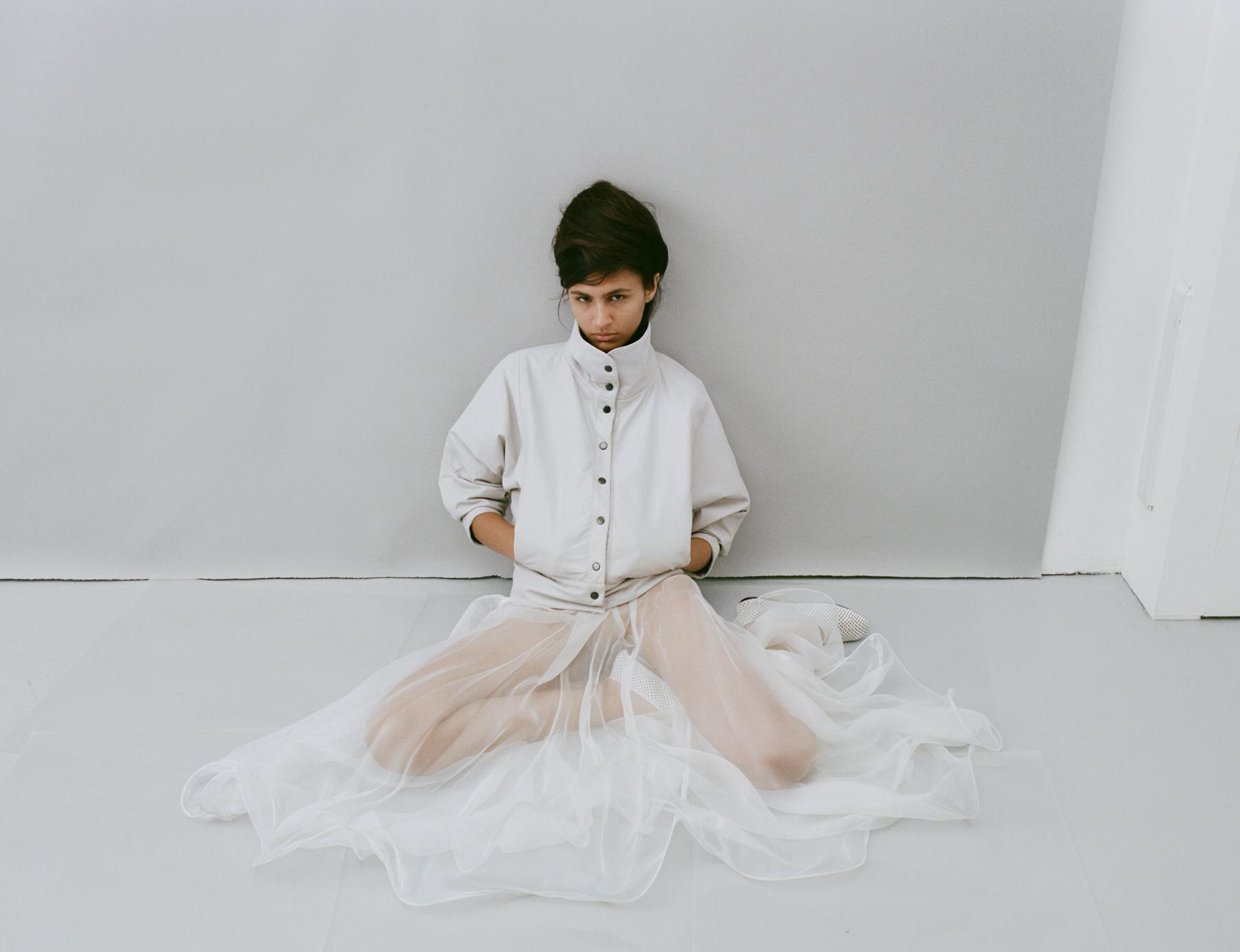
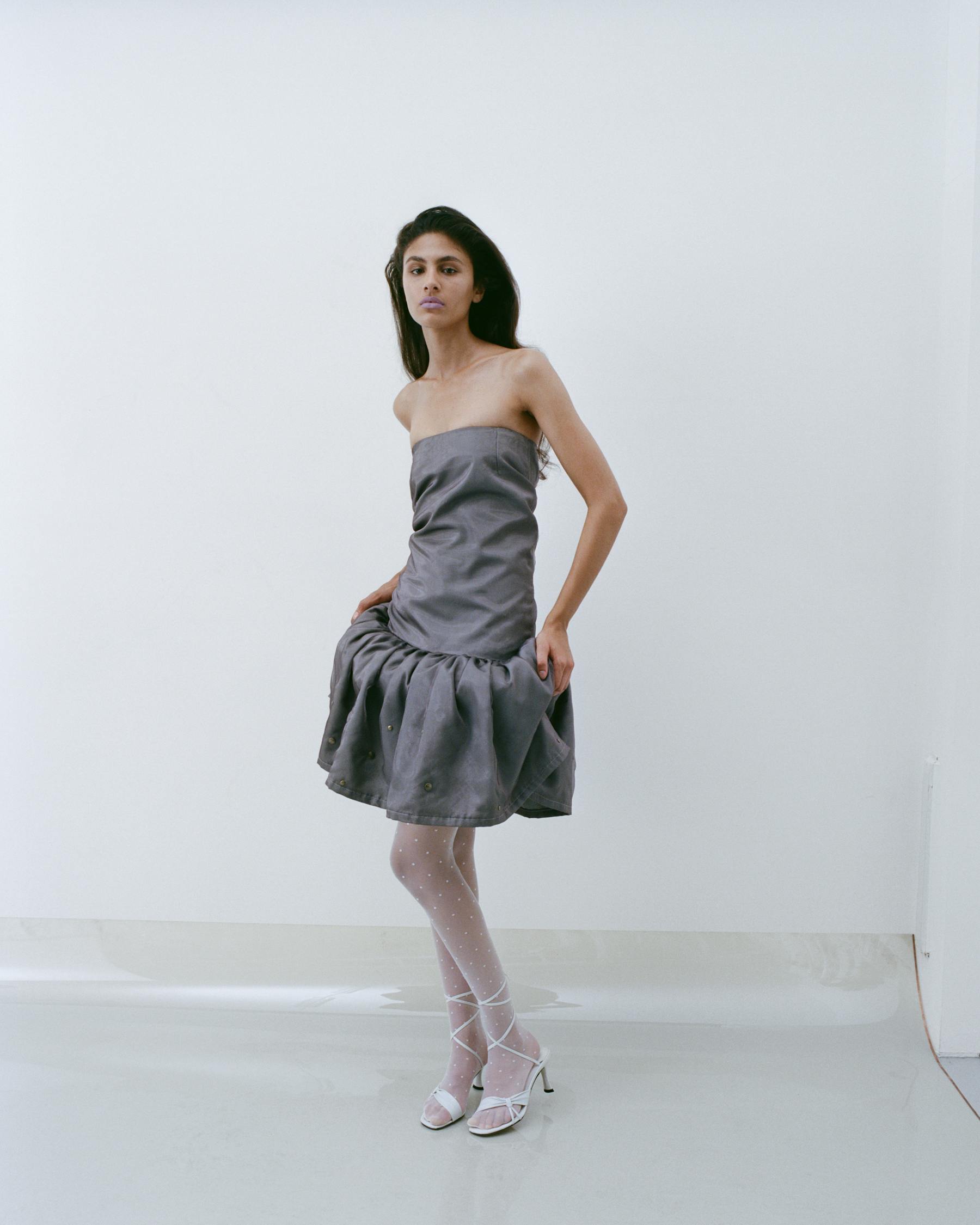
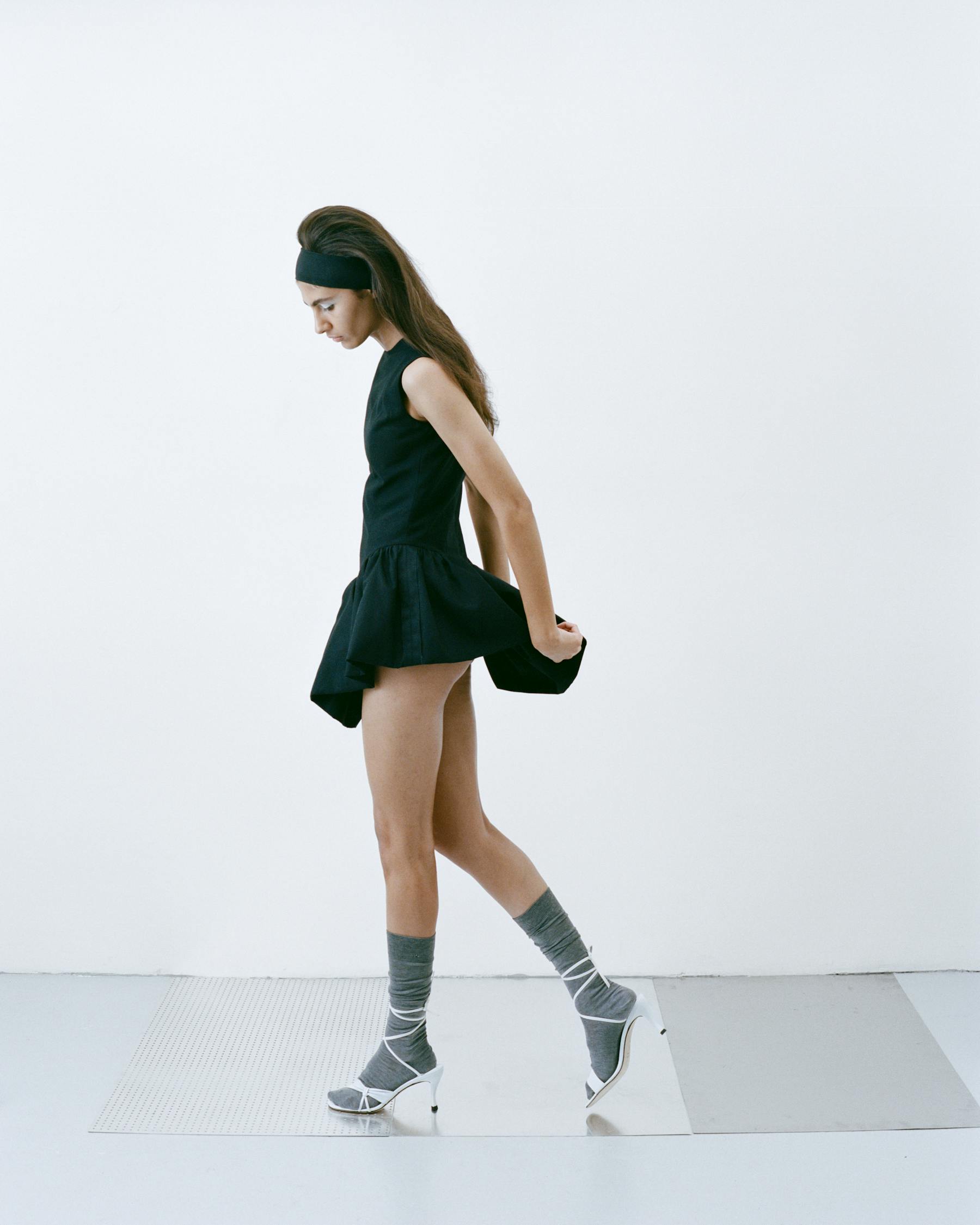
I believe your mother was an aerobics teacher in the ’80s. Is she still your muse? Is that why you’re inspired by that decade of fashion?
Yes, I think she’ll always be one of my muses. I really enjoy this deeply personal approach to fashion and creation, and she’s obviously a big part of my life, and therefore of my work today. As a child, I loved hearing her stories about her youth in Copenhagen in the ’80s. Her memories — how she dressed, where she shopped — have helped shape my design language and my understanding of fashion.
Can you tell us a bit about the place where you work?
My studio is in Østerbro, in a basement space with windows that open onto the street. It used to be a kindergarten, which I love. There’s a playful, slightly nostalgic energy to it. The space is filled with objects, textiles, and old furniture I’ve collected over time. Sometimes it feels almost more like a living room than a workspace. I like being surrounded by things that carry stories. It creates an atmosphere that allows me to think and create intuitively.
What is your vision or approach to craft?
Craft is absolutely central to my work. I’ve always been drawn to garments that feel made — where you can sense the time, care, and intention behind every detail. I don’t believe in chasing perfection; I’m much more interested in presence, the feeling that something was made by hand, by someone who cared. For me, clothing should carry a certain weight of human touch.
What are you currently obsessed with?
Lately, I’ve been completely fascinated by a local Copenhagen museum that explores the city’s history through archaeology. They post these quite homemade videos on YouTube showing what they’re digging up — fragments of everyday life from hundreds of years ago. It’s incredible to think that the shape of a worn-down shoe sole can reveal how someone walked, or even their height. There’s something very poetic about that. It reminds me that clothing, too, holds traces of the people who wear it.
What would be your dream collaboration?
It feels a bit cliché to say — but let’s be honest — I would love to design costumes for a Sofia Coppola film. The way she builds character and tells stories through mood, location, clothing, and quiet details resonates deeply with me and my approach to design. Her visual language always sparks something emotional in me.
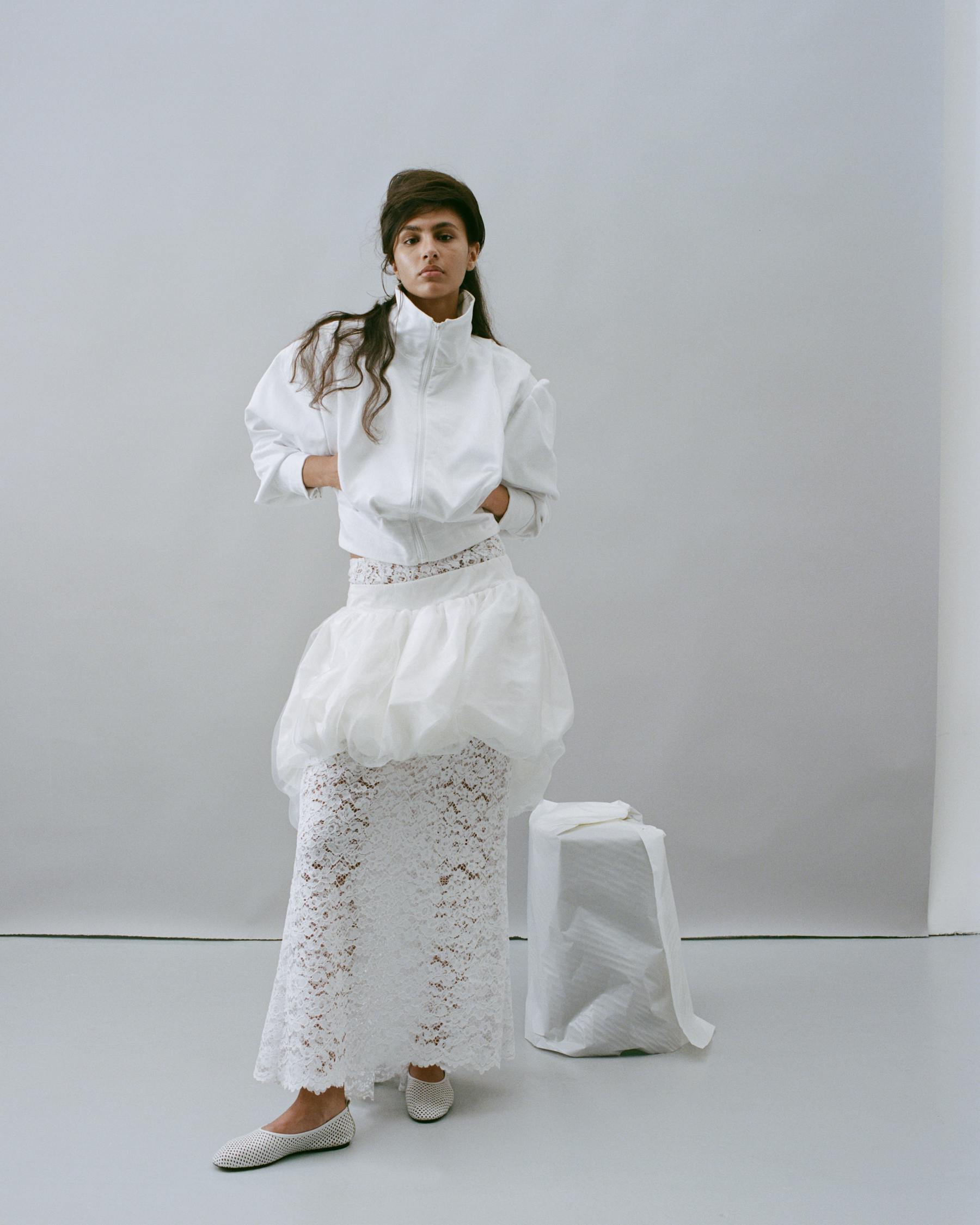
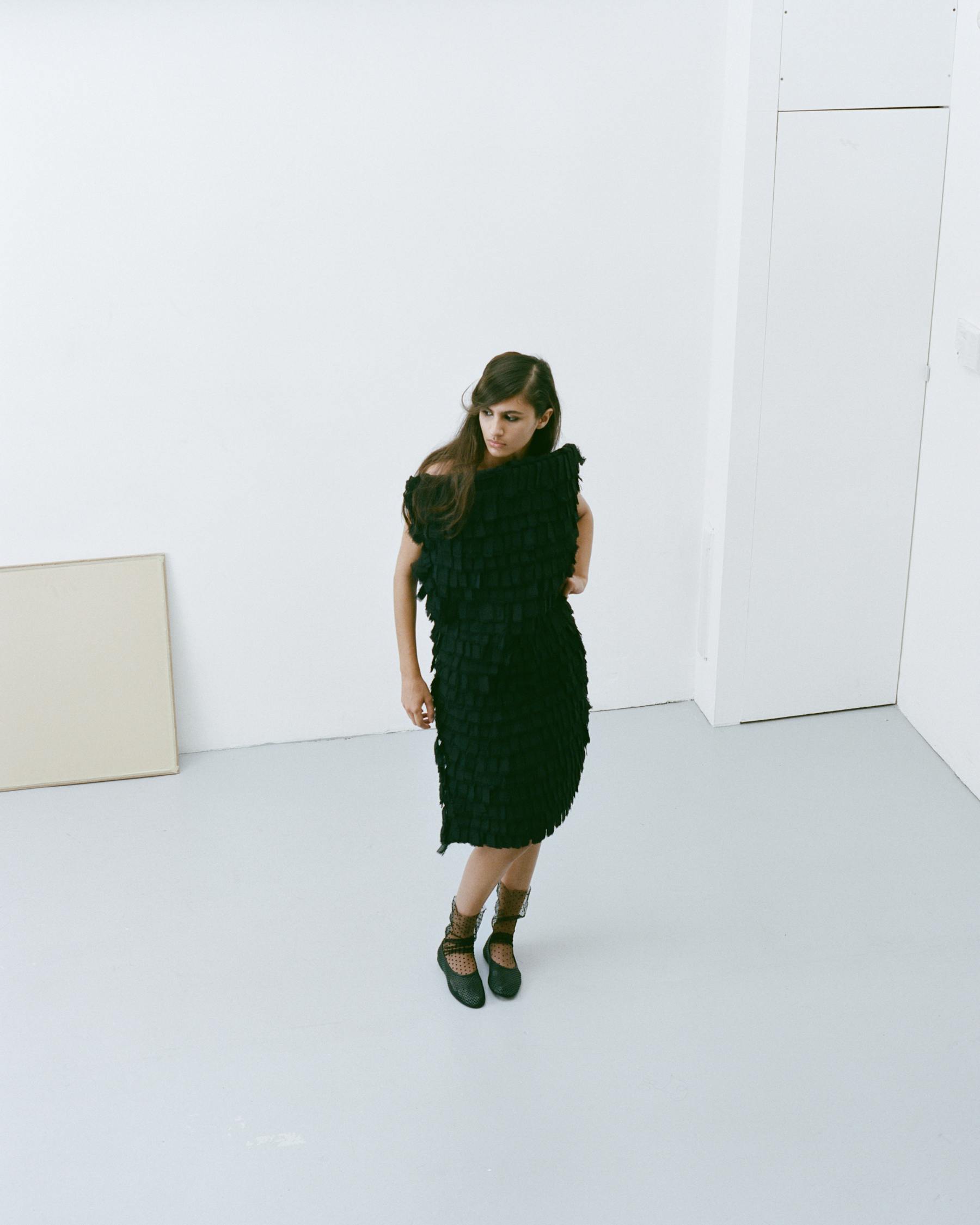
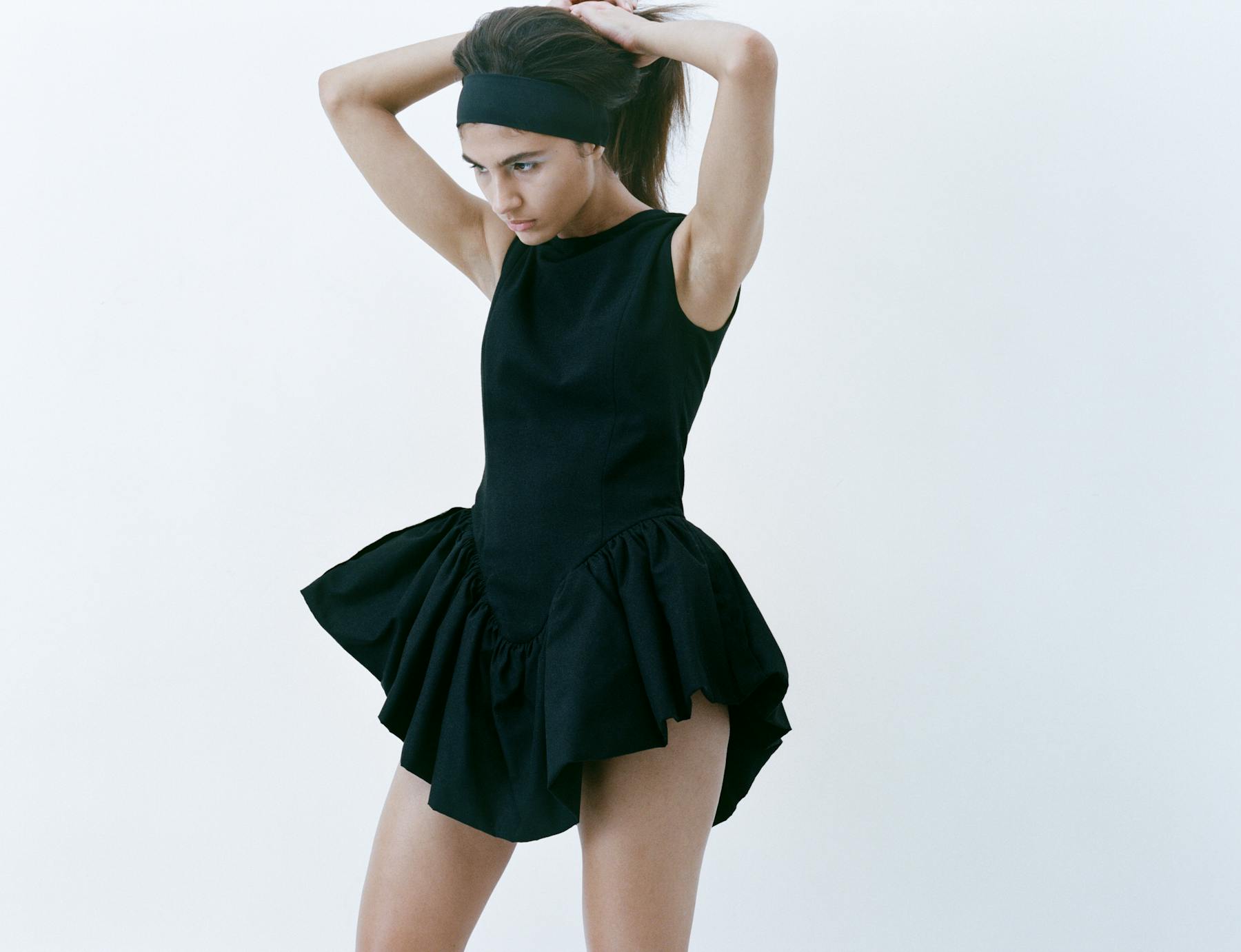
You started out as a blogger. What is your relationship to the internet today?
I grew up during that early wave of open-access internet, when fashion blogs were just beginning to bloom. As a kid, it felt revolutionary — to suddenly have this window into a world that had always seemed closed off. I don’t use the internet in the same way today, but that moment really shaped my approach to fashion. It taught me that anyone could have a voice — and that fashion could be shared, not just observed from the outside.
And what about Instagram? How does digital culture influence your work?
Instagram is both a tool and a challenge for me. I try not to spend too much time on it, but of course, it’s part of how I share my work. There’s a certain pressure to stay visible, but I also find inspiration in the way people use the platform to tell visual stories and share their work without limits. It’s about balance: using it intentionally without letting it dictate the pace or direction of my creativity.
How would you describe the Danish fashion scene today?
It feels incredibly dynamic right now! There’s a wave of emerging, talented designers who are all finding their own voices. Copenhagen is buzzing with creativity, and there’s a real sense of community here. I’m excited to see how this energy continues to evolve over the next few years — and how we can keep pushing what Danish fashion can be, beyond what people expect.
As a young designer, can you share an unforgettable memory?
One moment I’ll never forget was my first show in August 2023. It featured just one model — Britt Liberg — staged alongside twenty old mannequins. She performed by trying on all the looks, almost like a quiet ritual of getting dressed. The room was completely silent, and the music was played live on piano by her father, Hans Liberg. You could feel the focus, the tension — it was deeply intimate. That was the first time I truly experienced the emotional power of fashion in my own work — not just as garments, but as a kind of language. It became a shared moment of vulnerability between the audience, Britt, and the quiet intimacy of getting dressed and undressed. It felt very personal, and I think that’s what made it unforgettable.
What advice would you give to someone who wants to become a fashion designer?
Learn to trust your intuition. The industry can be overwhelming, and it’s easy to feel like you have to follow a certain path. But the truth is, there’s no single way to do this. Build your own rhythm, listen to your instincts, and don’t be afraid to take the long road. That’s where the interesting things happen.
How do you imagine your brand in the coming years?
I hope it continues to grow organically, the way it has over the past few years. I’d love to create a space — a hybrid between a studio and a showroom — where people can experience the brand in a more personal, tactile way. Somewhere that feels intimate and open, not just transactional. But more than anything, I want to keep exploring, keep challenging myself, and stay connected to the reason I began in the first place: to create pieces that feel real, emotional, and true to my own understanding of fashion and clothing.
Nicklas Skovgaard in one word, what would it be?
Eclectic.
